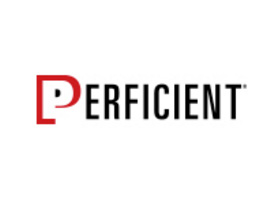The deployment of a portlet to a portal server is accomplished using xmlaccess (also called the XML configuration interface). At this point I need to point out that the deploy goal of maven is a separate concept from a portlet deployment. The maven deploy goal is intended to move your packaged maven artifact to the maven […]
Posts Tagged ‘Technical’
WebSphere Portal and Maven (Part 2)
This post assumes that you have installed an automated build stack (which consists of maven, a maven compatible repository server, and a continuous integration (CI) server). This post also assumes that you have installed and configured the m2eclipse plugin for your RAD/Eclipse IDE. The details of these installations are beyond the scope of this series of posts. A maven […]
WebSphere Portal and Maven
“Well it works on my machine” is the single most frustrating developer quote you will hear while working on a portal project. The open source world has experienced great success with automating builds and server deployments using apache maven and continuous integration (CI) servers like hudson, continuum, cruise control and others. Investing time in the beginning of […]
Automating SharePoint 2010 Installs
Configuring a SharePoint 2010 Farm is a non-trivial undertaking. Each of the servers in the farm must have the correct software installed. In addition, a myriad of accounts, databases, applications, and services must be correctly installed, created, and configured on each server. Typically, a project team requires three or four different farms (development, integration, validation/test, […]
Omnifind 9.1 – a brand new search
Admittedly, search hasn’t been IBM’s game for a bit. Slowly over the years we have seen their search product, Omnifind, come together and now with 9.1 it all changes – for the better. I have reviewed pretty much every major player in the search market from Autonomy to Google to Endeca to Lucene and […]
Cloning WebSphere Portal
To me, one of the most frustrating aspects of WebSphere Portal is the installation process. Don’t get me wrong, it has been greatly improved over the years to the point of being point and click for the basic install. Still, it takes a long time to get the basic software installed (2-3 hours). Then you […]
12 Things You Shouldn’t Do on a Portal Project: #10 When Web 2.0 is 2.Much
Ajax is a good thing, right? Well, not always. What Happened A financial company had a content based intranet and the implementer decided that absolutely everything should be done using Ajax. The home page had about a dozen portlets on it. Some were personalized but most simply displayed non personalized content which did not change […]
12 Things You Shouldn’t Do on a Portal Project: #8 When Developers Can’t Develop
The job of portal developers are to develop for portal, right? But what happens when they can’t develop? What Happened A major insurance company had a portal administrator who was adamant that nobody other than him could touch any of the environments in any type of administrative capacity, even basic portal administrator in a development […]
12 Things You Shouldn’t Do on a Portal Project: #8 When Developers Can't Develop
The job of portal developers are to develop for portal, right? But what happens when they can’t develop? What Happened A major insurance company had a portal administrator who was adamant that nobody other than him could touch any of the environments in any type of administrative capacity, even basic portal administrator in a development […]
Capacity and Workload Tool for Multi-layered Cloud Enivironment
Terry Griffey posted a YouTube video on how to manage the resources and workload in a highly virtualized environment. Within Perficient he’s well known as an all around bright guy who’s also really good at training people on a variety of complex concepts. Any of you who has seen virtual server sprawl and has not […]
12 Things You Shouldn’t Do on a Portal Project: #2 The Business Asked for it!
#2 in our twelve part series tells the story of how not to use core portal capabilities which are provided out of the box. As consultants, it is our job to communicate to business how portal technology can solve their problems and best implement their requirements with minimal cost and effort, not blindly brute forcing […]
SharePoint 2010 and Virtualization
In spite of the ever increasing interest in “the cloud”, the majority of enterprise SharePoint 2010 deployments still involve architecting a set of server-based resources (e.g. CPU, Memory, and Storage) as a target for the deployment of one or more SharePoint 2010 Farms. These resources are, however, no longer limited to physical servers, but are […]
